Like Michelangelo, da Vinci, Botticelli, Rubens, and Raphael before them, the legendary photographers Richard Avedon and his hero Henri Cartier-Bresson used the golden ratio in the compositions of their masterful portraits and street photography, capturing the “decisive moment.”
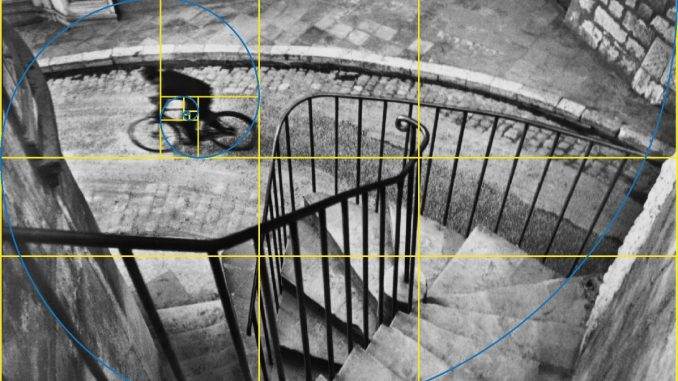
In a famous interview with Charlie Rose, the legendary photographer Richard Avedon saluted his hero Henri Cartier-Bresson, proclaiming him to be “The Tolstoy of Photography.”
Avedon stated: “Cartier-Bresson is the greatest photographer of the 20th century. He is like Tolstoy was to literature. He covered all the ground, in a vast way – politically, socially – and the most personal and complex insight into the human personality.
He showed the movements of history. He was in China. He was in India. He was everywhere that marked the movement of the 20th century. The pictures go beyond any breaking down of what a picture is supposed to be, or any intellectualizing about it. If you had a career that had five great photographs, that would be pretty good.
He has made hundreds of them. Nobody else has that track record”.
Not long after the interview with Avedon, Charlie Rose traveled to Paris and interviewed Henri Cartier-Bresson himself. When Rose asked Cartier-Bresson, “What makes a good composition?” Cartier-Bresson had one word—“Geometry.”
Sheila Turner-Seed interviewed Henri Cartier-Bresson in his Paris studio for a film-strip series on photographers that she produced with Cornell Capa for Scholastic. In the interview Bresson stated:
“I’m obsessed by one thing, the visual pleasure. In photography, you’ve just got the intuition. And it’s there. You’ve done it. The only way to correct is to make the next picture.
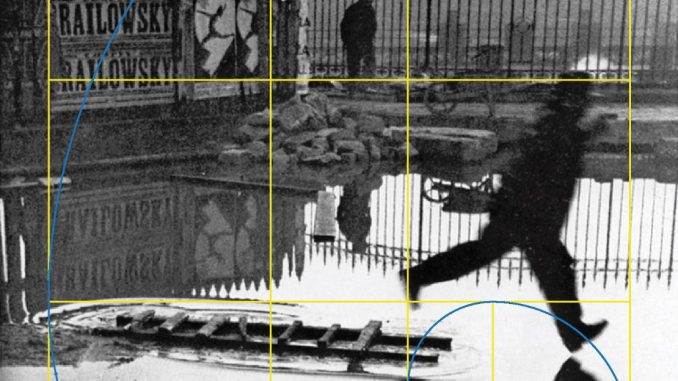
The greatest joy for me is geometry; that means a structure. You can’t go shooting for structure, for shapes, for patterns and all this, but it is a sensuous pleasure, an intellectual pleasure, at the same time to have everything in the right place.
It’s a recognition of an order which is in front of you.” — That’s why photography is important, in a way, because at the same time that it’s a great pleasure getting the geometry together, it goes quite far in a testimony of our world, even without knowing what you are doing.
But as for me, I enjoy shooting a picture. Being present. It’s a way of saying, “Yes! Yes! Yes!” It’s like the last three words of Joyce’s “Ulysses,” which is one of the most tremendous works which have ever been written. It’s “Yes, yes, yes.” And photography is like that. It’s yes, yes, yes. And there are no maybes. All the maybes should go to the trash, because it’s an instant, it’s a moment, it’s there!”
I know I know. We’re a couple of paragraphs into a photography article and Cartier-Bresson and Avedon have already referenced James Joyce and Tolstoy!
What’s next? The golden ratio? Yes! Regarding the golden ratio in composition, Henri Cartier-Bresson wrote,
“Composition must be one of our constant preoccupations, but at the moment of shooting it can stem only from our intuition, for we are out to capture the fugitive moment, and all the interrelationships involved are on the move”.
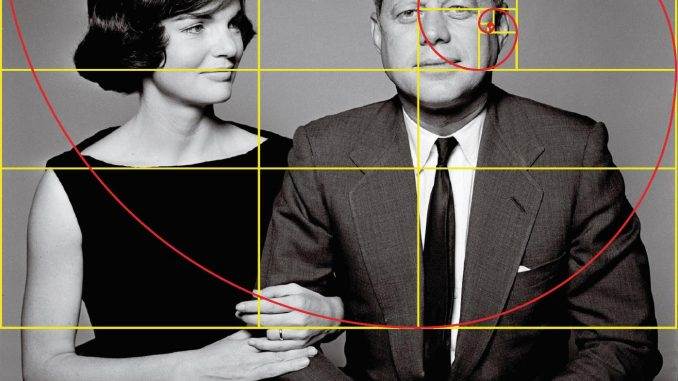
In applying the Golden Rule, the only pair of compasses at the photographer’s disposal is his own pair of eyes. Any geometrical analysis, any reducing of the picture to a schema, can be done only (because of its very nature) after the photograph has been taken, developed, and printed – and then it can be used only for a post-mortem examination of the picture.
I hope we will never see the day when photo shops sell little schema grills to clamp onto our viewfinders; and the Golden Rule will never be found etched on our ground glass.
If you start cutting or cropping a good photograph, it means death to the geometrically correct interplay of proportions. Besides, it very rarely happens that a photograph which was feebly composed can be saved by reconstruction of its composition under the darkroom’s enlarger; the integrity of vision is no longer there.
There is a lot of talk about camera angles; but the only valid angles in existence are the angles of the geometry of composition and not the ones fabricated by the photographer who falls flat on his stomach or performs other antics to procure his effects”.
As Cartier-Bresson exalted his compositions with the golden ratio, and as he was Avedon’s hero, we should not be surprised to find the golden harmonies in Avedon’s photos too:
But why? Why does the golden ratio exalt beauty, I kept asking myself over the summer of 2016. And while conducting extensive research for my book The Golden Ratio Principle (https://www.amazon.com/Golden-Number-Ratio-Principle-Compositions-ebook/dp/B01M7X55M2 ), I formulated a humble explanation, which I named The Golden Ratio Principle:
Dr. E’s Golden Ratio Principle: The golden ratio exalts beauty because the number is a characteristic of the mathematically and physically most efficient manners of growth and distribution, on both evolutionary and purely physical levels.
The golden ratio ensures that the proportions and structure of that which came before provide the proportions and structure of that which comes after, thusly providing symmetry over not only space but time, and exalting life’s foundational dynamic symmetry.
Robust, ordered, symmetric growth is naturally associated with health and beauty, and thus we evolved to perceive the golden ratio harmonies as inherently beautiful, as we saw and felt their presence in all vital growth and life—in the salient features and proportions of humans and nature alike, from the distribution of our facial features and bones to the arrangements of petals, leaves, and sunflowers seeds.
As ratios between Fibonacci Numbers offer the closest whole-number approximations to the golden ratio, and as seeds, cells, leaves, bones, and other physical entities appear in whole numbers, the Fibonacci Numbers oft appear in the arrangement of nature’s discrete elements as “growth’s numbers.”
From the dawn of time, humanity sought to salute their gods in art and temples exalting the same proportion by which they and all their vital sustenance, as well as all the flowers and nature’s epic beauty, had been created—the golden ratio.
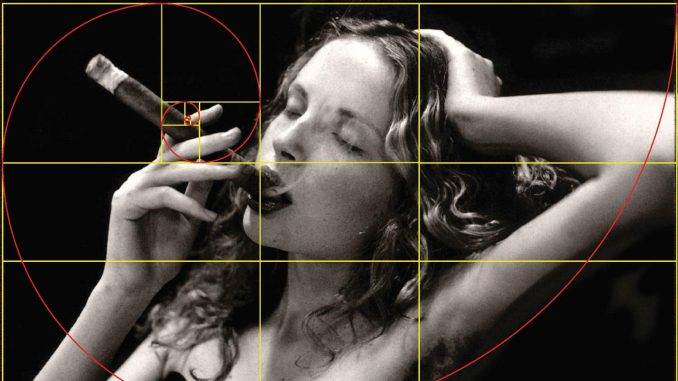
As the human body naturally exalts the golden ratio, as evident in classical art including Botticelli’s The Birth of Venus and the sculptures of Venus de Milo and Michelangelo’s David, it makes perfect sense that by using the golden ratio in the overarching composition of a photograph, one can unite the human subject with the greater photograph in a deeper harmony.
There is no doubt that great artists such as Michelangelo, Leonardo da Vinci, Rubens, Raphael, and Picasso used the golden harmonies.
While many elements of course contributed to their greatness, so too did many elements contribute to Helmet Newton’s place as a master artist in the in the photographic realm, the golden ratio being one of them.
Like Picasso, Cartier-Bresson and Avedon were seen as revolutionaries, and just as Picasso yet used the timeless golden compositions in his innovative cubism, they used the classical golden harmonies in his innovative creations which ushered in new styles of fashion, fine art, and street photography.
Whether they used the golden harmonies consciously or unconsciously (or in some combination of both manners), may now forever remain a mystery. So the greater question becomes, “How will you strive to use the golden harmonies?”
Consciously or unconsciously? Or in both manners?” The best way to learn how to compose via the golden mean is to simply study the works of the great masters–to browse through Cartier-Bresson’s, Avedon’s, and Rembrandt’s books, and simply enjoy the art.
And then, leaf through again, armed with a ruler or golden ratio calipers, seeing if you can spot the golden harmonies. Over time, it will jump out at you.
Too often these days it seems that we forget to study the past masters and bask in the vast gifts they have given us. “Instagram” is wedded to the fleeting instant while “facebook” presents far more of the face than the soul.
So take a few hours away from social media, lose yourself in the art and photography section of a used bookstore, and bask in the golden glow, so that you too might be able to exalt and share it. Shoot not only for snapchat, but for eternity too.
Article By Dr Elliot McGucken

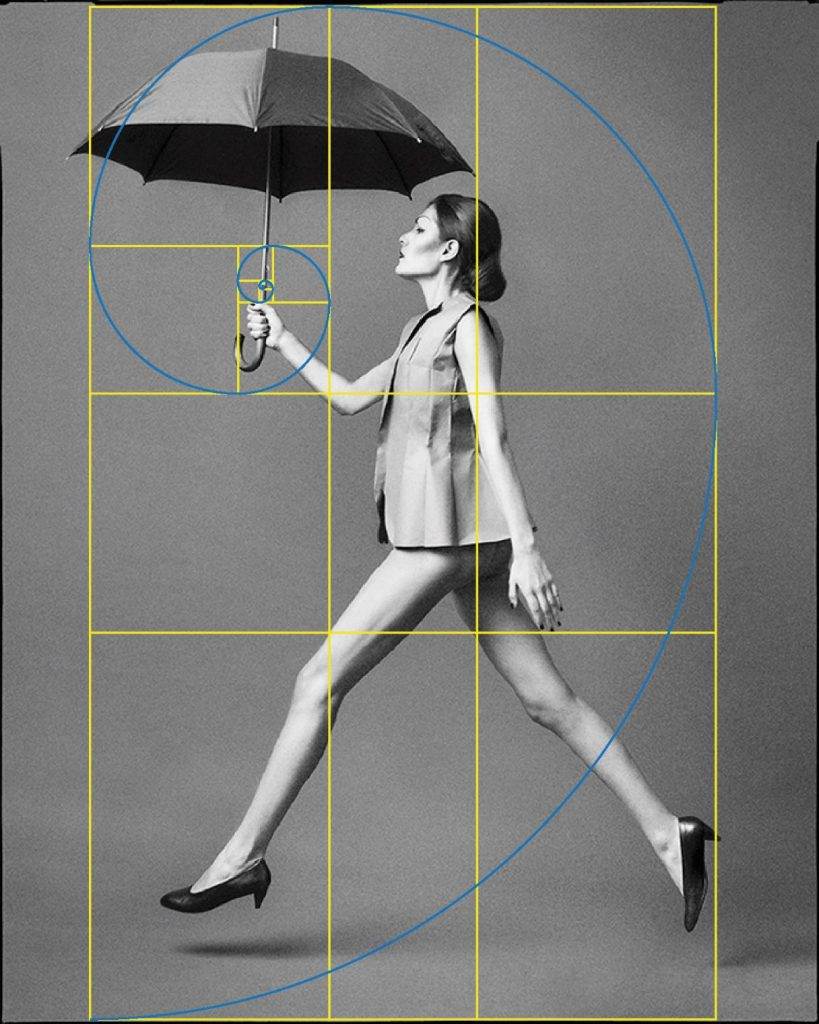
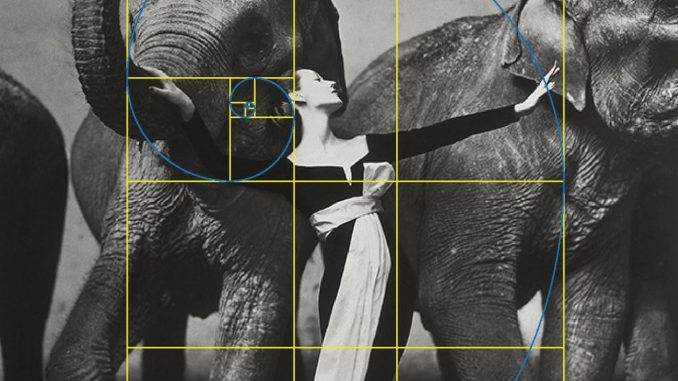
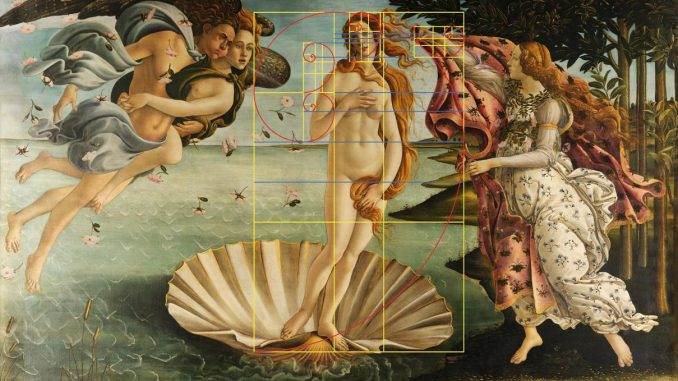



Leave a Reply